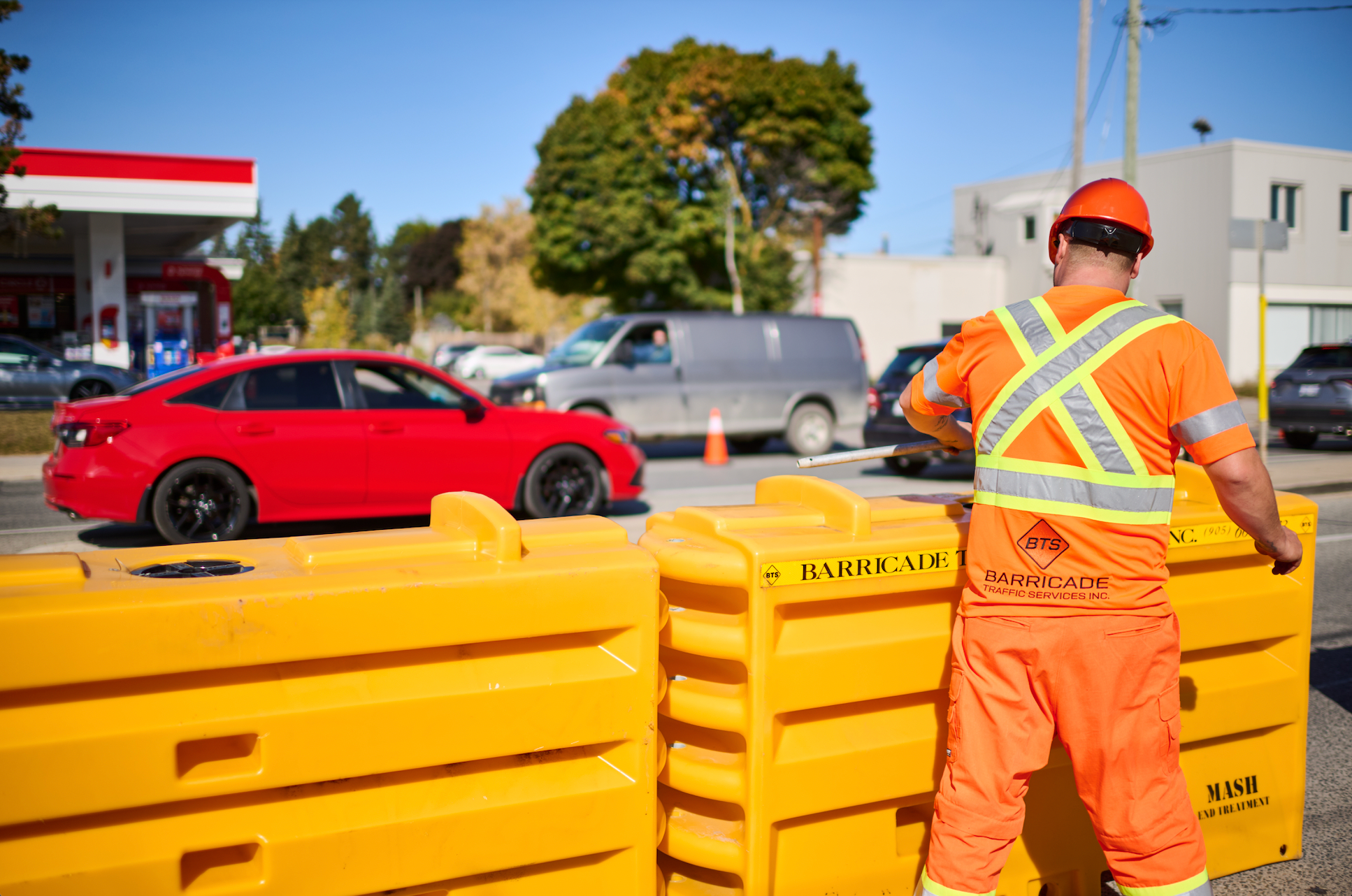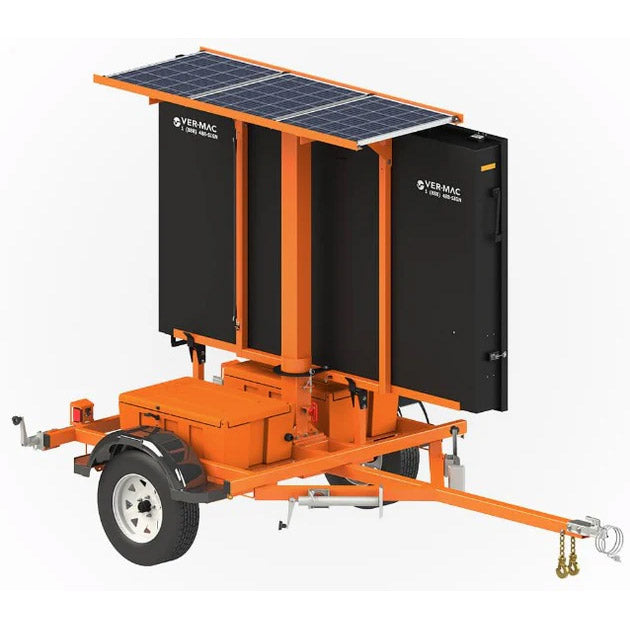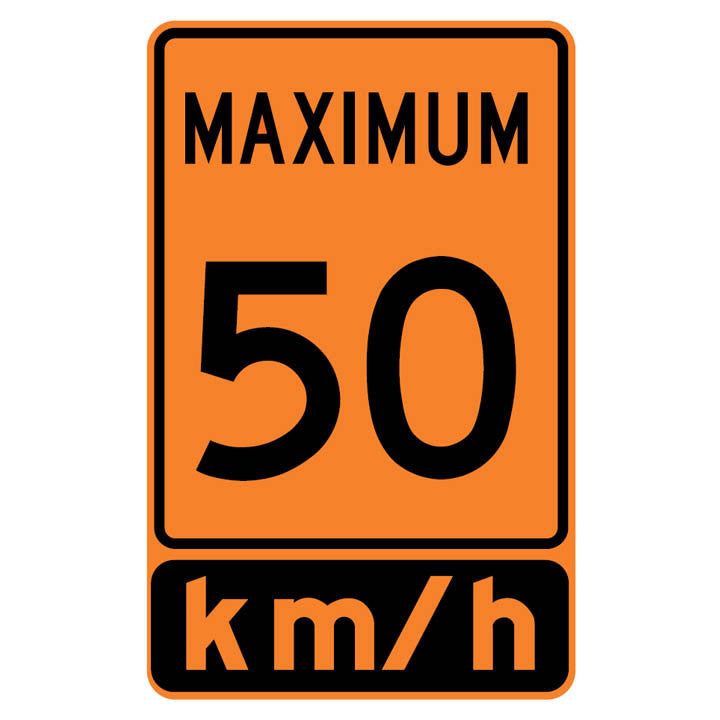Article: Comparing Plastic Vs. Concrete Jersey wall Barriers

Comparing Plastic Vs. Concrete Jersey wall Barriers
Jersey wall barriers are crucial for keeping roads safe, managing traffic, and protecting construction zones. You can spot them on highways, at construction sites, or in temporary and permanent setups. The two main types are plastic and concrete barriers. Understanding their differences helps you choose the right one for your needs.
Table of Contents
-
What Are Jersey Wall Barriers?
-
Plastic Jersey Barriers: Key Details
-
When to Use Plastic Barriers
-
Why Plastic Water-Filled Barriers Are Often Better
-
Barricade Traffic Services: Your Barrier Experts
-
Contact Barricade Traffic Services
What Are Jersey Wall Barriers?

Jersey wall barriers are blocks designed to separate lanes of traffic, protect work zones, and improve safety. They help reduce accidents by guiding vehicle traffic and shielding workers in construction projects.
The sloped design reduces the risk of vehicles crossing into restricted work areas and minimizes damage during collisions. Modern traffic control companies, road construction companies etc. rely heavily on these barriers due to their versatility. They have the ability to be deployed in both temporary and permanent scenarios. These barriers help manage traffic, ensure workers’ safety, and guide pedestrians in work areas.
Plastic Jersey Barriers: Key Details
- Light and Easy to Move: When empty, these barriers are lightweight and simple to set up. They are perfect for temporary setups such as, detours or public events.
- Fillable for Stability: When filled with water, these plastic jersey wall barriers meet the required weight specifications for both minor and major vehicle impacts.
- Durable Materials: Made from tough plastic (High-density polyethylene), these barriers resist weather damage and last a long time.
- Common Uses: Ideal for construction zones, temporary road closures, or managing crowds at events.

Material Composition
Plastic jersey wall barriers are made from high-density polyethylene (HDPE). A versatile and durable plastic known for its high strength-to-density ratio. This material is resistant to cracking, UV radiation, and extreme weather conditions, ensuring long-lasting performance even in harsh environments. HDPE is also recyclable, making it an environmentally friendly choice for traffic control.
Advantages of Plastic Barriers:
-
Lightweight and Easy to Transport: Plastic barriers are significantly lighter than concrete, making them easier to handle. This feature is especially beneficial for temporary applications that require quick setup or adjustments.
-
Bright Colors: Designed in bright red or yellow, these barriers are far more visible than traditional grey concrete barriers, ensuring they catch drivers' attention and enhancing safety in work zones.
-
Cost-Effective: Plastic barriers are less expensive to manufacture, transport, and deploy, making them an economical choice for short-term or budget-sensitive projects.
-
Environmentally Friendly: Many plastic barriers are made from recyclable materials, making them a greener alternative to concrete.
-
Water Filling: The ability to fill the barriers adds versatility, allowing users to adjust the stability based on specific needs, such as windy conditions or vehicle impacts.
-
Flexibility in Placement: Their modular design allows for easy customization of barrier length and shape, enabling traffic control companies to adapt to various site requirements.
Drawbacks of Concrete Barriers:
-
Heavy and Difficult to Move: The sheer weight of concrete barriers makes them challenging to transport and install, often requiring specialized machinery.
-
Higher Costs: The manufacturing, transportation, and installation costs are significantly higher than those of plastic barriers.
-
Potential for Vehicle Damage: Collisions with concrete barriers can cause extensive damage to vehicles, posing a higher risk of injury to drivers and passengers.
-
Limited Customization: Unlike plastic barriers, concrete barriers cannot be easily customized in terms of color or design.
When to Use Plastic Barriers
-
Temporary Road Work and Events: Plastic barriers are lightweight, reusable, and easy to move, making them great for short-term or long-term projects and events.
-
Crowd Control: Plastic barriers are easy to set up and adjust, ideal for guiding pedestrian traffic at events.
Why Plastic Barriers Are Often Better
Plastic water-filled barriers are versatile, affordable, and easy to use, making them a popular choice for traffic safety and construction projects. Their lightweight design and reusability save time and money, and their ability to be recycled makes them environmentally friendly.
Barricade Traffic Services: Your Barrier Experts

At Barricade Traffic Services, we provide high-quality, industry approved plastic water-filled barriers for traffic control and safety. Made from durable HDPE, our barriers are weather-resistant, lightweight, and easy to handle. They’re perfect for lane closures, construction projects, and crowd management.
Why Choose Us?
-
High-visibility colors to improve safety.
-
Lightweight for quick setup and repositioning.
-
Designed for use in construction zones, public events, and temporary road closures.
Contact Barricade Traffic Services
Choosing the right barrier is key to traffic safety and efficient work zones. Our experienced services team can help you find the best solution for your traffic control plan. Contact us today to learn more about our plastic barriers, traffic management plans, and other products/services. Ensure your next project is a success with Barricade Traffic Services!




